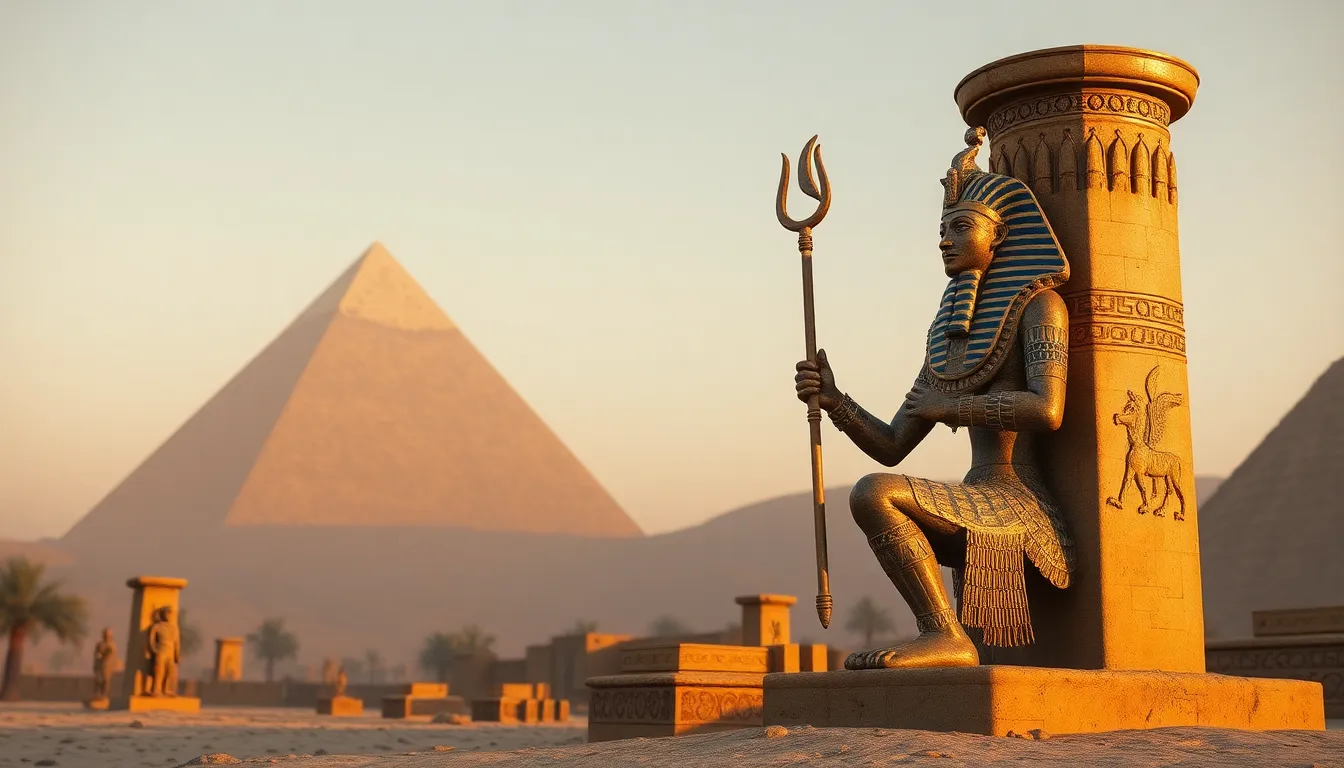The Celestial Role of Festivals in Ancient Egyptian Society
I. Introduction
Ancient Egyptian society was deeply intertwined with the cosmos, reflecting a world where celestial phenomena influenced daily life, agricultural cycles, and religious practices. Festivals held a significant place within this societal framework, serving as vital expressions of cultural identity and spiritual devotion. This article aims to explore the celestial significance of various festivals in ancient Egypt, shedding light on how these celebrations connected the mortal realm with the divine.
II. The Cosmic Framework of Ancient Egyptian Beliefs
Ancient Egyptian cosmology was rich and complex, centered around the belief in a harmonious universe governed by gods and celestial bodies. The following elements were key to their worldview:
- Ra: The sun god, symbolizing light, creation, and the cycle of life.
- Osiris: God of the afterlife and rebirth, associated with the cyclical nature of life.
- Isis: Goddess of magic and motherhood, often connected to the nurturing aspects of the cosmos.
The Nile River, revered as a life-giving force, also played a pivotal role in the agricultural calendar, dictating the timing of planting and harvest. Festivals were thus timed in accordance with these cosmic and agricultural rhythms.
III. Major Festivals and Their Celestial Associations
Several major festivals in ancient Egypt were directly linked to celestial events and agricultural cycles:
A. The Opet Festival: Celebrating the flooding of the Nile
The Opet Festival was a significant celebration marking the annual flooding of the Nile, which was crucial for agriculture. During this festival, the statue of Amun was transported from Karnak to Luxor, symbolizing the renewal of life and fertility.
B. The Wepet-Renpet Festival: The New Year and cosmic renewal
Wepet-Renpet, meaning “the Opening of the Year,” celebrated the New Year and the rebirth of the cosmos. This festival included rituals to honor deities, ensuring a fresh start and divine blessings for the year ahead.
C. The Sed Festival: The king’s rejuvenation and celestial order
The Sed Festival celebrated the pharaoh’s continued vitality and reaffirmed his connection to the divine order. This festival included various rituals that symbolized renewal and the restoration of cosmic balance.
IV. Ritual Practices and Astronomical Observations
Rituals were often aligned with celestial events such as solstices and equinoxes, showcasing the Egyptians’ advanced understanding of astronomy:
- Rituals: Specific ceremonies were conducted during astronomical events to honor the gods and ensure the continuation of cosmic order.
- Temples: Sacred spaces like the Temple of Karnak were strategically oriented to astronomical alignments, facilitating observations of celestial bodies.
- Priests: The role of priests extended beyond spiritual leadership; they were also astronomers who monitored celestial movements and integrated this knowledge into religious practices.
V. Festivals as a Means of Communicating with the Divine
Festivals served as crucial moments for communication between the people and the divine. Key aspects included:
- Offerings and sacrifices: Participants brought offerings to temples, symbolizing gratitude and seeking favor from the gods.
- Music and dance: Artistic expressions were integral to festivals, enhancing the spiritual atmosphere and evoking divine presence.
- Divine interaction: Festivals were viewed as opportunities for direct interaction with the gods, reinforcing the belief that the divine could manifest among the people.
VI. Community and Society: Festivals as Social Cohesion
Festivals played a pivotal role in fostering community and social cohesion within ancient Egyptian society:
- Unity: Festivals united individuals from various social classes, promoting a sense of belonging and shared identity.
- Participation: While the general populace engaged in celebrations, elite members often held prominent roles, reflecting the societal hierarchy.
- Cultural identity: Festivals reinforced cultural values and traditions, ensuring the transmission of beliefs across generations.
VII. The Decline of Festivals and Their Celestial Significance
Over time, the significance of festivals began to wane due to various factors:
- Religious changes: The rise of foreign gods and influences led to shifts in religious practices and the decline of traditional festivals.
- Foreign invasions: Invasions and occupations disrupted cultural continuity, leading to the assimilation of Egyptian beliefs into foreign practices.
- Modern legacy: Despite changes, remnants of ancient festivals can still be observed in modern Egyptian culture, reflecting a lasting heritage.
VIII. Conclusion
In summary, festivals in ancient Egyptian society were not merely celebrations but vital expressions of cosmic connection, cultural identity, and social cohesion. They served as a bridge between the earthly and the divine, reinforcing the significance of celestial bodies in the lives of the ancient Egyptians. Reflecting on these practices provides a deeper understanding of their enduring legacy and the profound relationship between humanity and the cosmos in ancient Egyptian belief systems. Further research into these traditions can enrich our appreciation of ancient cultures and their astronomical insights.




